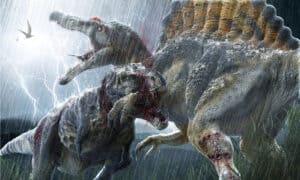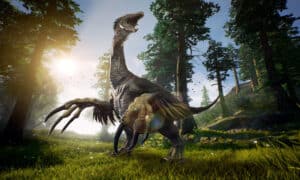Illinois may be “the Prairie State” these days, but it was once inundated by the sea. As a result, Illinois and other neighboring parts of the U.S. were poor areas for fossil preservation to occur. Let’s see how the geological history of the state impacted scientists’ knowledge of the dinosaurs that lived in Illinois.
Learn which species, if any, once roamed the land along with what fossilized prehistoric creatures lived here.
What Is Illinois’s State Dinosaur?
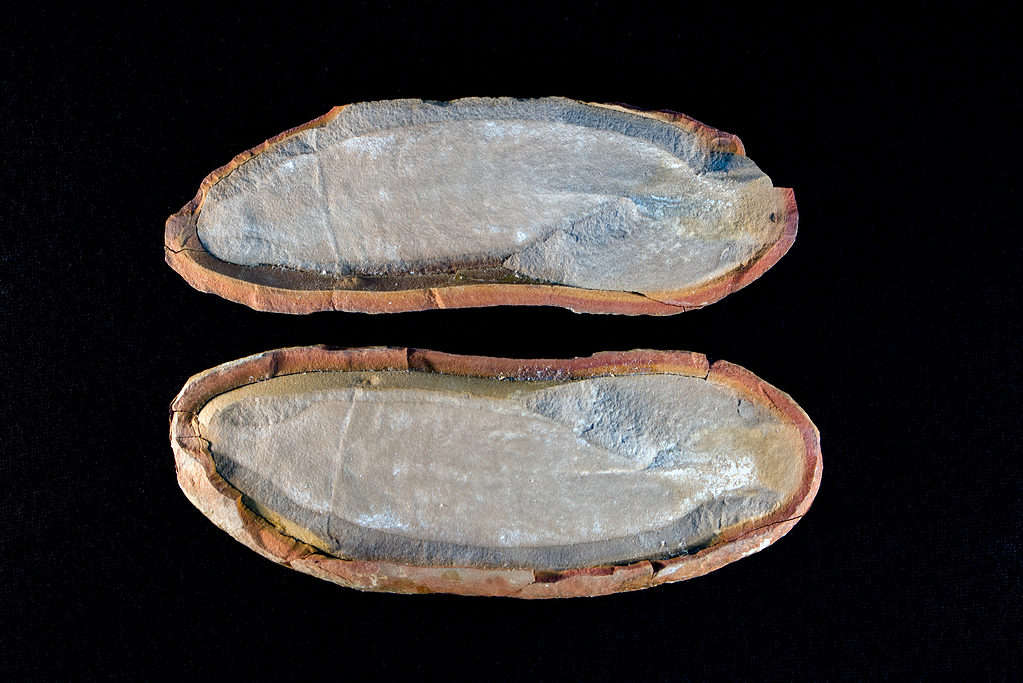
This creature is nicknamed “the
Tully
monster,” and it was an invertebrate or possibly a vertebrate marine animal that hunted other marine animals.
©Kimberly Boyles/Shutterstock.com
Illinois does not have a state dinosaur. However, it does have a state fossil. Tullimonstrum gregarium is the state fossil of Illinois. This creature is nicknamed “the Tully monster,” and it was an invertebrate or possibly a vertebrate marine animal that hunted other marine animals.
Fossils of the Tully monster were found in the Mazon Creek fossil beds in Grundy County, Illinois. These creatures lived about 300 million years ago, and they grew between 3 and 14 inches long.
The Tully monster is notable because it did not have a hard body but a soft body lacking bones or chitin. However, ongoing interpretations of the creature contend that it may have certain vertebrate qualities or invertebrate qualities. Both camps continue to argue about the fine points of the creature’s body.
Did Dinosaurs Live in Illinois?
Dinosaurs may have lived in Illinois, but scientists have found no fossil evidence that supports their existence in the state. Terrestrial dinosaurs mostly lived between 245 and 65.5 million years ago. This time period is called the Mesozoic Era.
The geology of North America was greatly altered throughout the Mesozoic. For example, the Western Interior Seaway split the U.S. into an eastern and western landmass between 100 million and 66 million years ago.
Long before then, between 325 and 540 million years ago, Illinois was part of a shallow tropical ocean near the equator. At around 325 million years ago, much of Illinois was a swampy area. The seas no longer covered the state during the Mesozoic Era, and it wasn’t a giant swamp.
However, no rock record from most of this time exists except for some Cretaceous deposits from 145 to 65.5 million years ago. The continued impacts of wind and water ensured no rock layers were deposited and lasted long enough for humans to find evidence of dinosaurs that lived in Illinois.
Aside from the erosional forces far in the past, more recent events in the Cenozoic Era helped destroy rock layers that were preserved until then. Glaciers that formed during the Pleistocene Epoch further scoured the land clean of rocks dating back to the age of dinosaurs.
While dinosaurs may have lived in Illinois, scientists will be hard-pressed to find any evidence of them.
Prehistoric Animals That Lived in Illinois
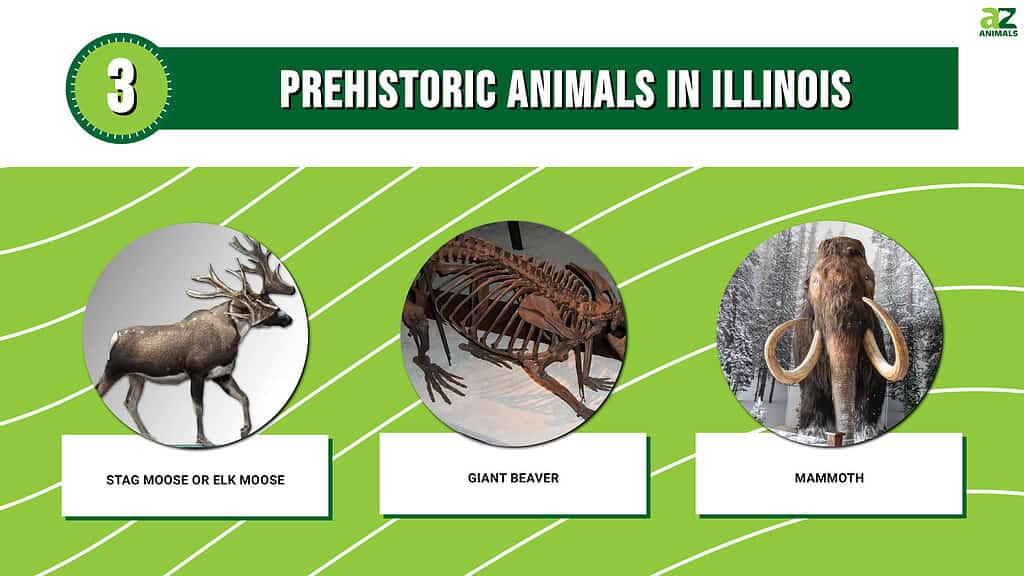
Although we have no evidence of dinosaurs that lived in Illinois, fossils and pseudo-fossils of interesting prehistoric creatures did survive. Consider some of the creatures that once wandered Illinois to make up for the lack of evidence that exists about dinosaurs from this part of the country.
1. Stag Moose or Elk Moose
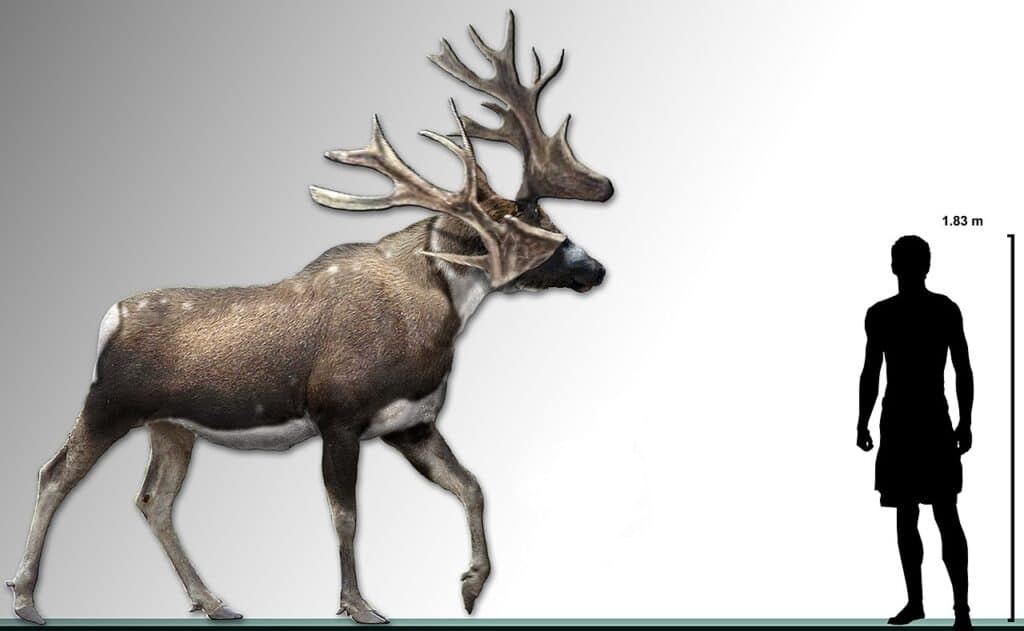
was a very large deer that lived in Illinois until about 11,500 years ago.
©Dantheman9758 at English Wikipedia / CC BY 3.0 – License
Cervalces scotti was a very large deer that lived in Illinois until about 11,500 years ago. This gigantic deer is also called the elk moose. They measured about 8.2 feet long, stood 7.5 feet tall, and weighed upwards of 1,500 pounds or more.
Evidence of these creatures has been found throughout many parts of the United States, but the oldest specimen was 30,000 years old and located in Iowa. The large deer had a massive set of palmate antlers.
Like others, these animals went extinct a few thousand years after humans started to appear in North America. While the first humans settled in North America between 20,000 and 15,000 years ago, the stag moose was extinct 11,500 years ago. Human hunting may have contributed to the animals’ extinction.
2. Giant Beaver
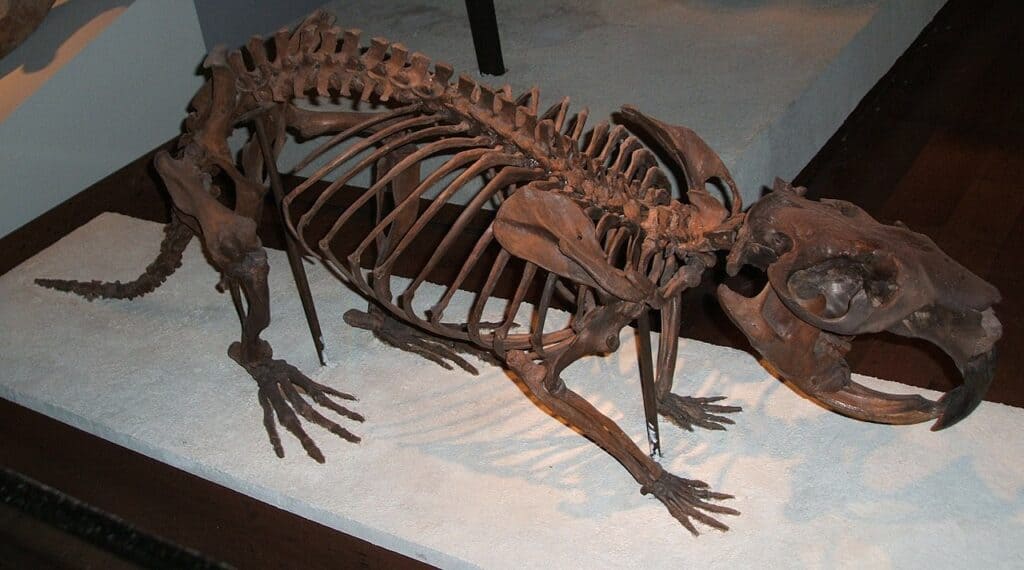
©Steven G. Johnson / CC BY-SA 3.0 – License
Castoroides was a very large genus of beavers. Some species could measure between 6 and 7 feet long and weigh upwards of 200 to 275 pounds! These creatures are well-known for their large teeth. Their incisors measured about 6 inches long! The giant beaver was about the size of a large wolf!
The giant beaver went extinct between 12,800 and 11,500 years ago due to changes in the climate and the arrival of human beings. Once again, scientists don’t know the role that humans played in these animals’ extinction.
3. Mammoths

They lived in Illinois between 40,000 and 10,000 years ago before they died out.
©iStock.com/leonello
A variety of mammoths lived throughout the United States, but the woolly mammoth was one of the common varieties that lived in Illinois. Woolly mammoths were elephant-like creatures with large, rounded heads and sloped backs. Moreover, they had heavy fur to keep them warm in the cold environments where they once lived.
Woolly mammoths crossed the Bering Straits about 500,000 years ago, so they were heavily adapted to cold, northern climates. However, they lived in Illinois between 40,000 and 10,000 years ago before they died out. Scientists know that mammoths and humans lived alongside each other for thousands of years, but they don’t know if humans were one of the causes of their eventual extinction.
Where Can You See Fossils of Animals and Dinosaurs That Lived in Illinois?
Although Illinois has yielded no fossils of dinosaurs that lived in the state, you can still visit museums to see dinosaur and prehistoric animal fossils. One place you can go to see fossils in Illinois is the Burpee Museum of Natural History.
This museum is located in Rockford, Illinois, and it is home to a wide variety of exhibits and areas. The museum has a paleontology lab where you can learn about how paleontologists obtain, record, and preserve fossils for the future.
The museum also has a yearly PaleoFest where you can directly interact with paleontologists and learn about fossils.
The Illinois State Museum also has many different collections available that feature fossils from Illinois. Many of their resources are available online to teach visitors about what the Midwest was like during the last Ice Age, the Wisconsinan glaciation!
Call ahead to make sure that any museum you wish to visit has the exhibits and availability you desire!
The photo featured at the top of this post is © iStock.com/Aunt_Spray
FAQs (Frequently Asked Questions)
Did dinosaurs live in Illinois?
Dinosaurs may have lived in Illinois, but scientists have found no fossil evidence that supports their existence in the state.
What is the state fossil for Illinois?
Illinois does not have a state dinosaur. However, it does have a state fossil. Tullimonstrum gregarium is the state fossil of Illinois. This creature is nicknamed “the Tully monster,” and it was an invertebrate or possibly a vertebrate marine animal that hunted other marine animals.
Thank you for reading! Have some feedback for us? Contact the AZ Animals editorial team.



